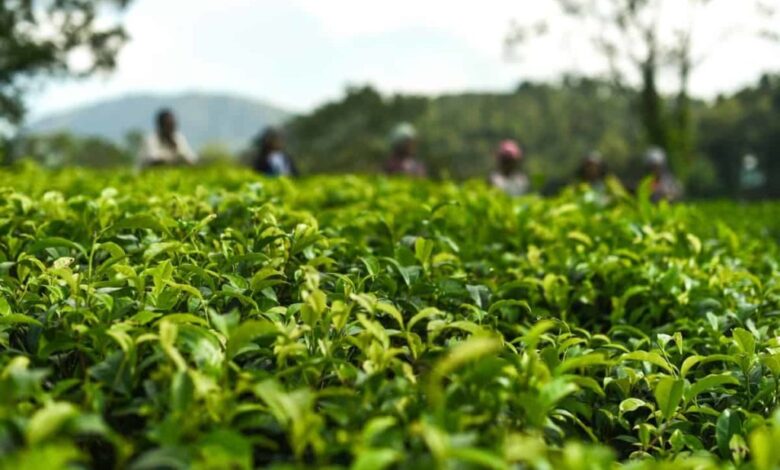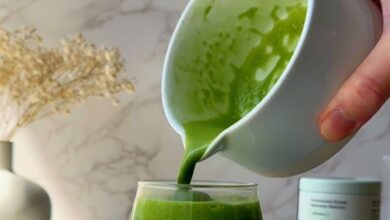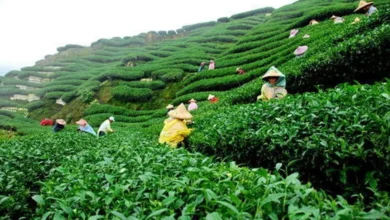Top 5 Organic Fertilizers for Matcha and Tea Crops

Introduction
As someone who has worked on tea farms for over a decade, I’ve seen firsthand how the health of the soil affects the taste, color, and quality of the leaves. When I started growing matcha, I realized that using the right organic fertilizers made all the difference. Matcha is a delicate crop that requires care, consistency, and most importantly, rich soil full of natural nutrients.
In this guide, I’ll share my top 5 recommended organic fertilizers that I personally use and trust for growing high-quality matcha and other tea crops. If you want your farm to stay chemical-free and still get great yield and profit, this article is for you.
Why Organic Fertilizers Matter in Matcha Farming
Matcha is not just any tea – it’s consumed whole in powdered form, so any chemicals in the leaf directly enter the body. That’s why going organic is not only healthier for consumers but also increases the market value of your product.
Using organic fertilizers also improves:
- Soil structure and moisture retention
- Microbial activity in the root zone
- Long-term sustainability and yield
- Certification eligibility (for USDA Organic, India Organic, etc.)
And most importantly, it helps you grow mindfully – which fits perfectly with the philosophy behind matcha.
Top 5 Organic Fertilizers for Matcha and Tea Plants
1. Vermicompost (Worm Castings)
Why I Recommend It:
Vermicompost is rich in nitrogen, phosphorus, potassium (NPK), and beneficial microbes. It improves soil texture, encourages root growth, and increases leaf chlorophyll levels, which is essential for matcha’s bright green color.
How to Use:
- Mix 2-3 tons per acre during soil preparation
- Top-dress around plants every 3-4 months
Pro Tip: Use vermicompost tea (liquid form) for quick nutrient absorption during leaf growth phase.
2. Cow Dung Compost
Why I Recommend It:
An age-old fertilizer in India, cow dung is natural, cheap, and effective. It enhances soil fertility, improves organic matter content, and provides a slow release of nutrients.
How to Use:
- Apply 4-5 tons per acre as base compost before planting
- Combine with neem cake or ash for better pest resistance
Pro Tip: Let cow dung compost for at least 3-6 months to reduce pathogens and increase potency.
3. Neem Cake (Neem Khali)
Why I Recommend It:
Neem cake is a powerful bio-pesticide and soil enricher. It improves nitrogen efficiency in the soil while keeping harmful insects and nematodes away naturally.
How to Use:
- Apply 250-500 kg per acre before sowing
- Mix into topsoil around plants during growing season
Pro Tip: Combine with vermicompost or castor cake for a complete nutrient + pest management solution.
4. Panchagavya
Why I Recommend It:
A traditional Indian tonic made from cow products (milk, curd, ghee, urine, and dung), Panchagavya boosts plant immunity and promotes uniform leaf growth. Perfect for matcha leaves that need to be soft, clean, and consistent.
How to Use:
- Dilute 3% (3L in 100L water)
- Spray on leaves every 15-20 days during growing season
Pro Tip: Spray during early morning or evening for best absorption.
5. Bone Meal (Organic Phosphorus Source)
Why I Recommend It:
Bone meal provides essential phosphorus and calcium, supporting strong root development and leaf structure. For matcha, strong roots = better nutrient absorption = more vibrant leaves.
How to Use:
- Apply 150-200 kg per acre during soil preparation
- Avoid overuse as it can imbalance the soil pH
Pro Tip: Mix with compost to avoid clumping and improve distribution.
Bonus Tips: Building a Natural Fertilizer Schedule
To get the best results, don’t rely on just one fertilizer. Instead, create a seasonal plan:
Pre-Planting:
- Cow dung compost
- Bone meal
Vegetative Growth (March to May):
- Vermicompost top dressing
- Panchagavya spray
Pre-Harvest (Shade-growing phase):
- Neem cake around root zone
- Vermicompost tea (for extra leaf boost)
Post-Harvest (Soil Recovery):
- Add compost again to maintain health
Benefits of Going Organic in Matcha Farming
- Higher Market Price: Buyers pay more for certified organic matcha (up to ₹5000 extra per kg)
- Healthier Soil: Better long-term productivity
- Better Taste and Color: Rich chlorophyll from healthy leaves
- Environmental Safety: No chemical runoff or residue
- Faster Organic Certification: Natural inputs = smoother audits
FAQs
Q1: Can I mix these fertilizers together?
Yes! Many farmers use a combination for better results. Just avoid overdoing any single one.
Q2: How long until I see results?
You’ll see better leaf quality in 2-3 months and full soil improvement over 1-2 seasons.
Q3: Do I need to buy all of them?
Start with 2-3 based on your budget and availability. Even simple compost + neem can make a big difference.
Conclusion: Grow Naturally, Grow Mindfully
When you grow matcha with organic fertilizers, you’re not just farming — you’re healing the land, supporting wellness, and creating a product that people trust. I’ve seen farms turn around within one season just by switching to organic inputs.
So take that first step. Test these fertilizers on a small plot. Observe the change in leaf color, taste, and plant strength. And stay consistent.
Growing matcha is an art. Feeding the soil is the foundation.
Stay natural, stay aware.




